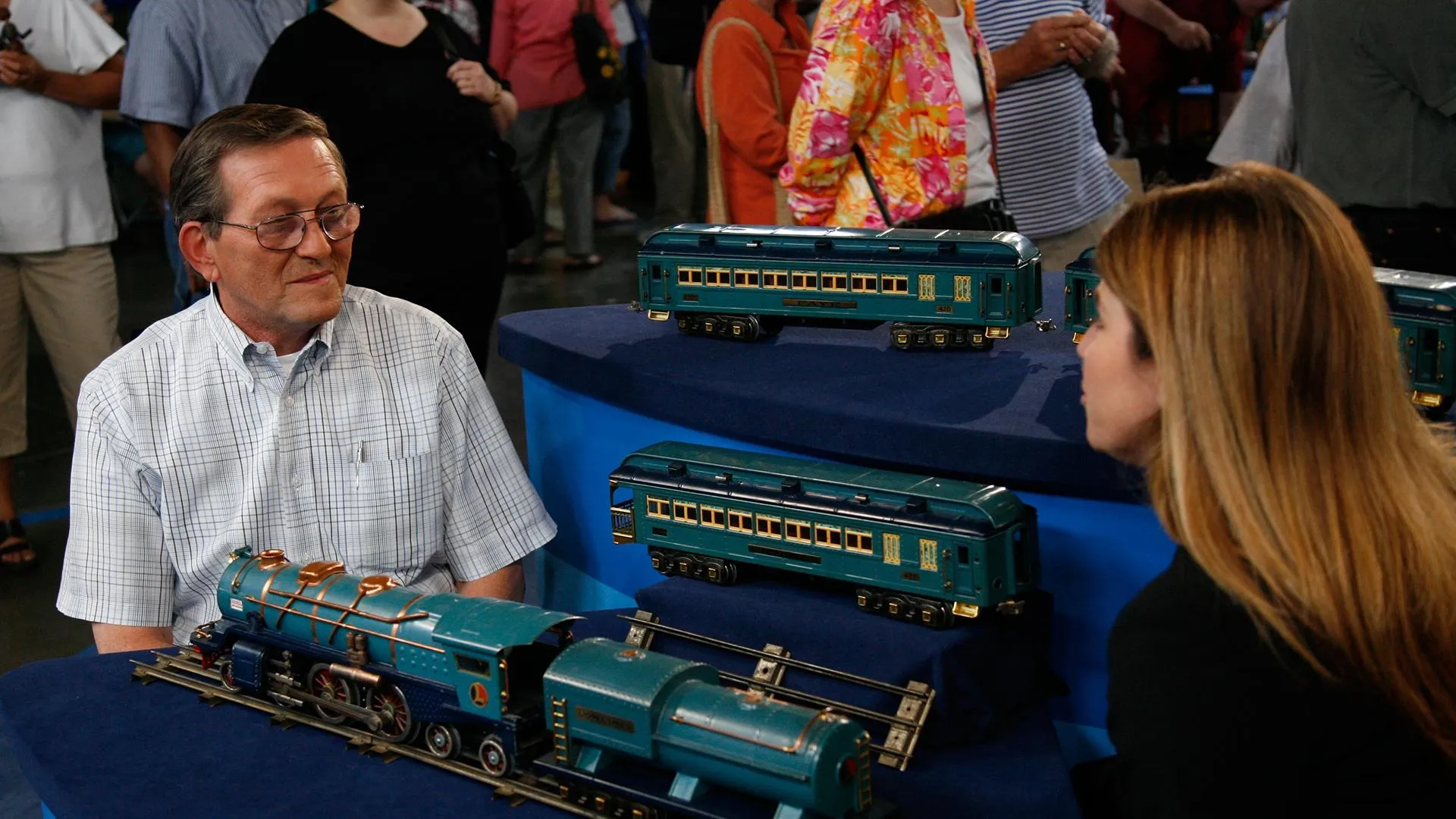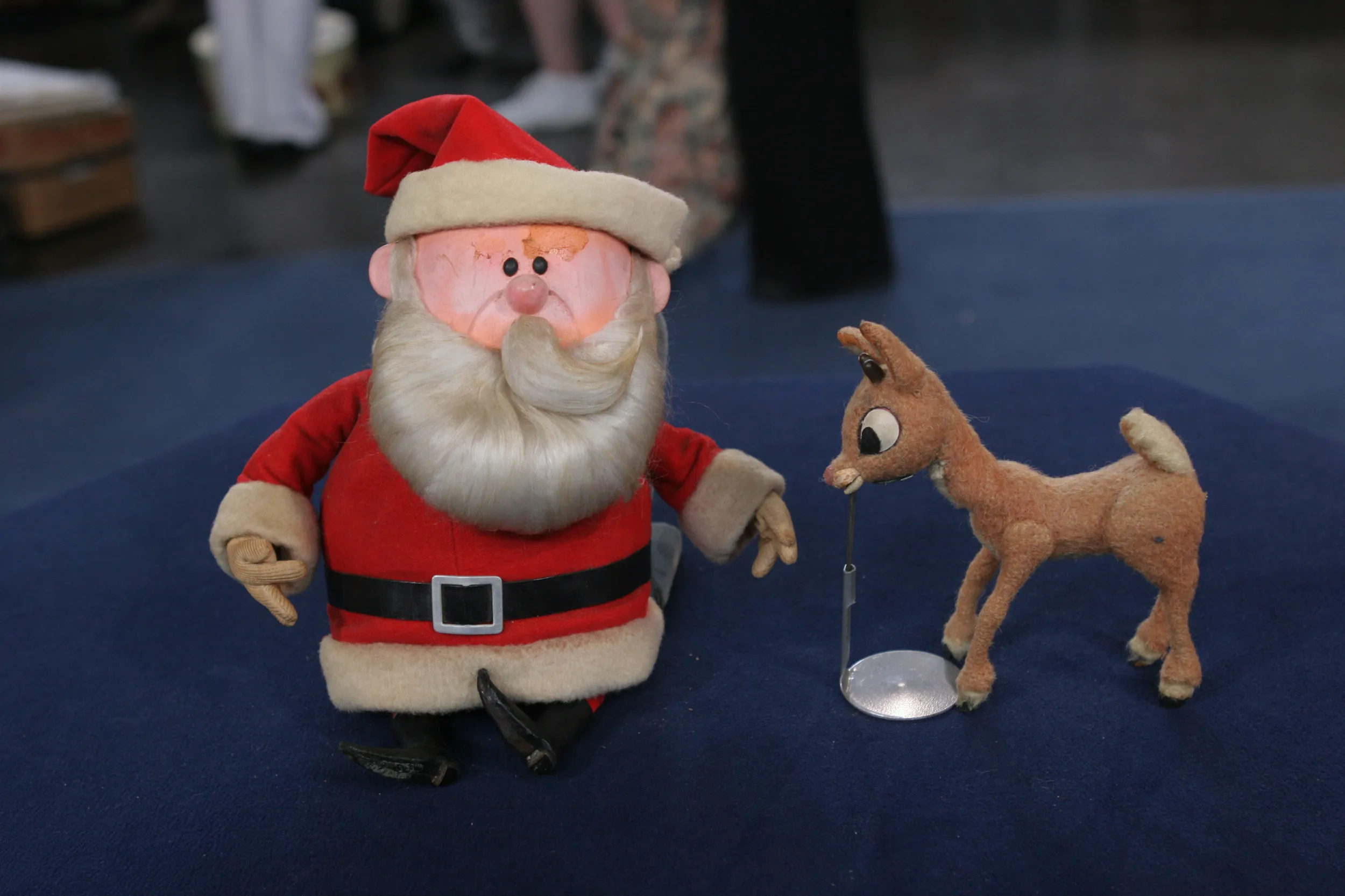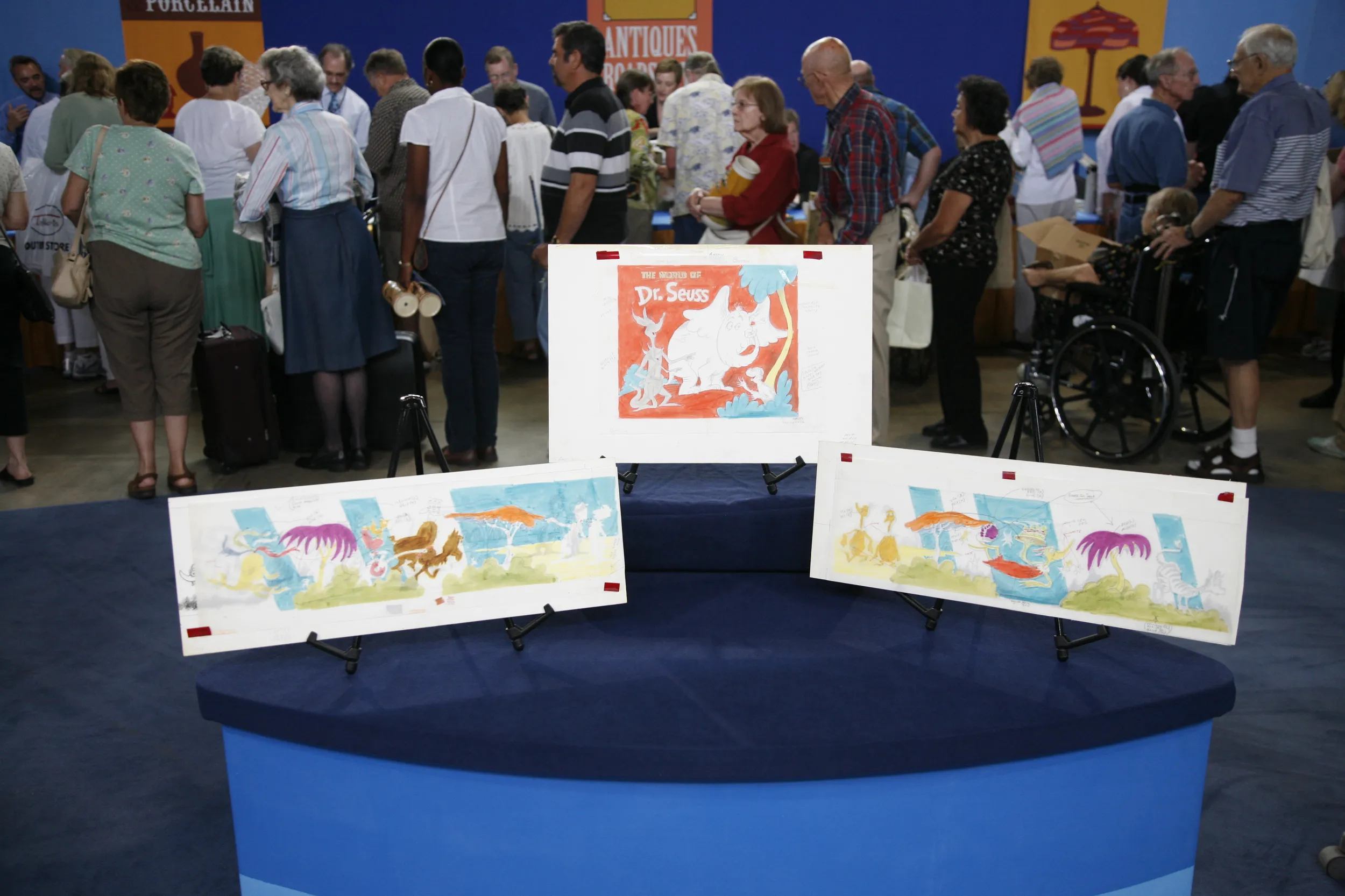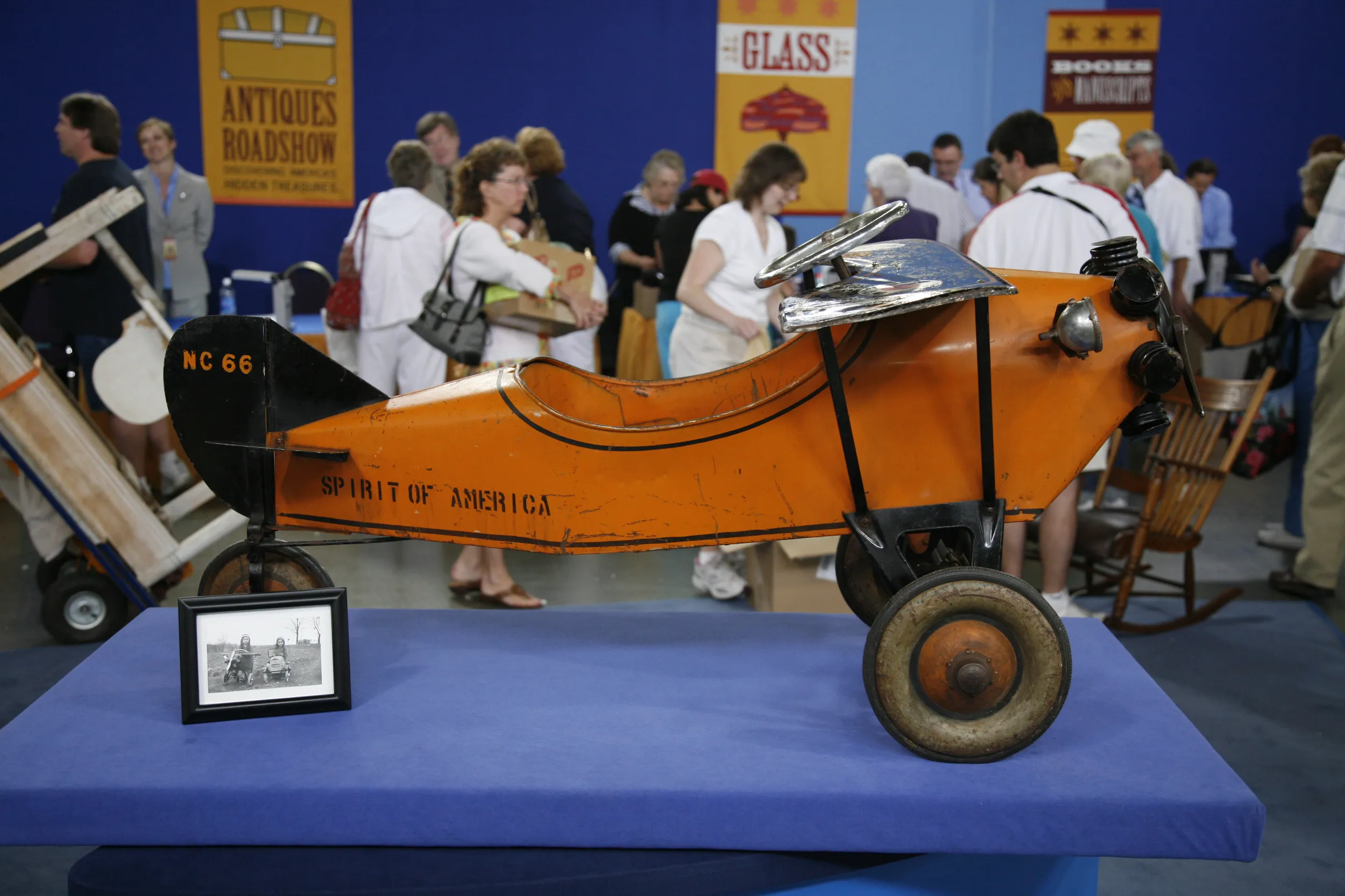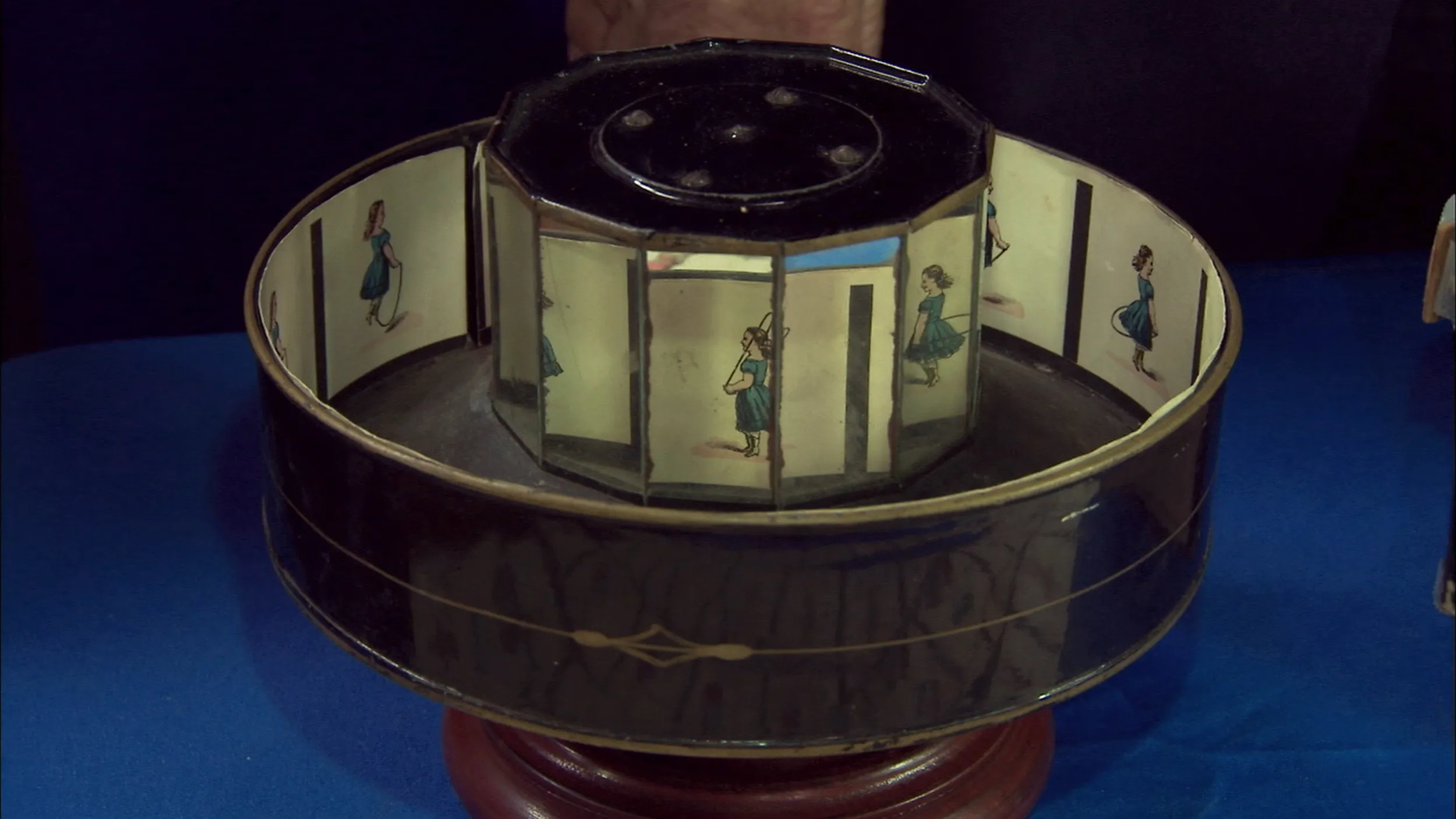GUEST: As a young boy, I used to see it on my grandmother's shelf in her house and I asked her where it came from and she said her father gave it to her, and it's been an object of somewhat mystery ever since.
APPRAISER: What do you know about it?
GUEST: What I know is it is a bank of sorts. There is one tiny hole in one side into which if you shine a light and you look on the inside of it, you can see what might be the inside of a husk of some kind.
APPRAISER: Any idea where it might be from?
GUEST: I have no idea and I'm hoping you do.
APPRAISER: (laughing) It's a very nice object. It is in fact a carved coconut.
GUEST: Okay.
APPRAISER: It's a great bank. These were done in Mexico throughout the 19th century. And we have a very classic motif there. Another motif here. It's carved on both ends. And we have a series of carved faces and heads on this side. And one of the reasons we know it's Mexican is right here, we see this bird and the snake.
GUEST: Okay, yes.
APPRAISER: And that is part of the seal of Mexico. That was the Mexican seal used between 1823 and 1916 off and on. So we know that it's Mexico, we know these carved coconuts were actually made in Mexico throughout the 19th century. Some of them actually go back as early as the 18th century. We believe this particular piece was carved probably about the third quarter of the 19th century. It's hard to tell, and there's not a lot of conventional wisdom over who did these or when they did them. There's theories that they were sailors on ships or prisoners in the Veracruz prison. You don't see a lot of the banks survive because kids use them. And of course, it's hard to get the money out. If you sold it at auction, summer of 2013, market's beginning to come back a little bit, I think it would be reasonable to expect an auction estimate of $1,500 to $2,500.
GUEST: All right, thank you very much.
APPRAISER: Thank you.


